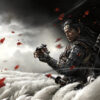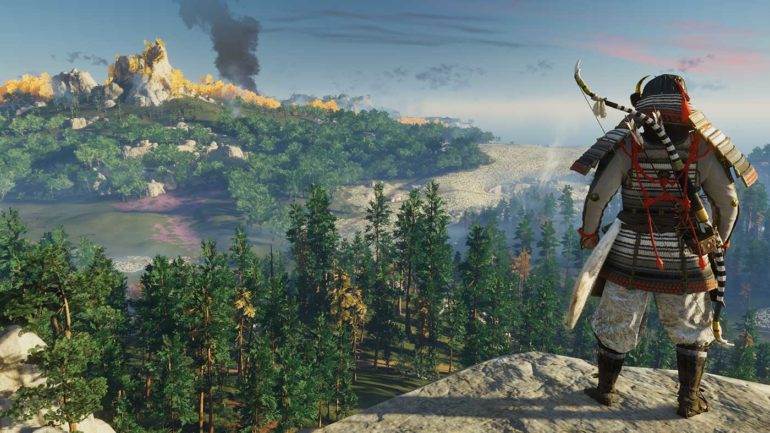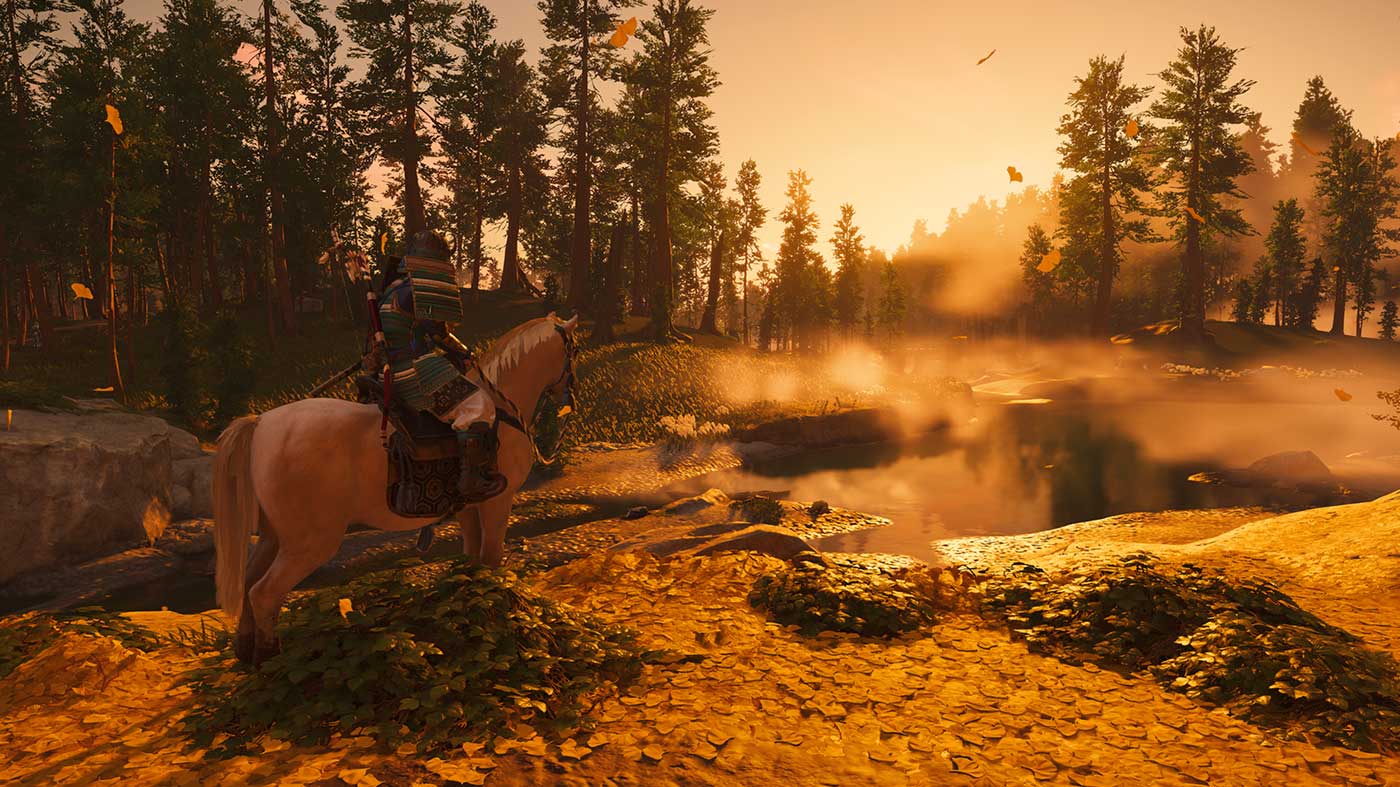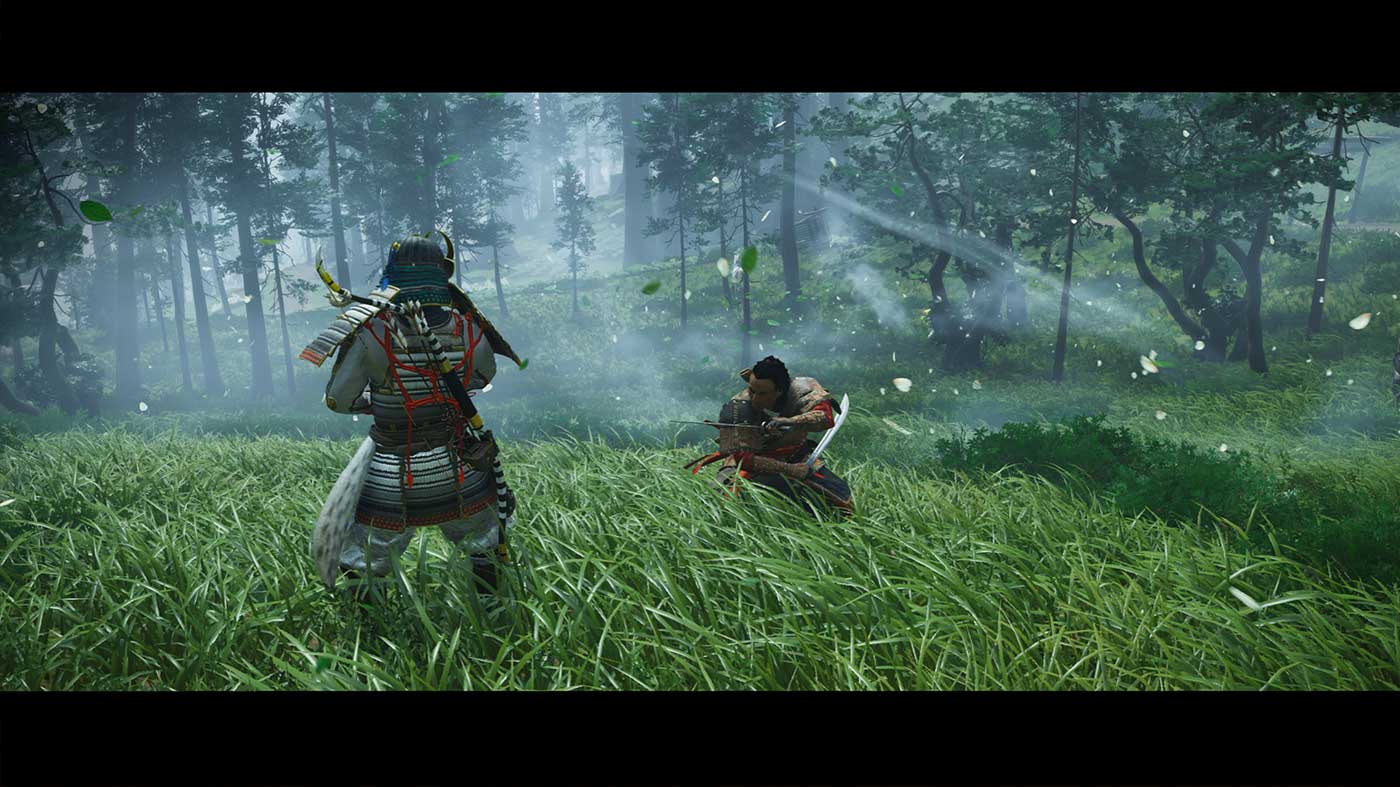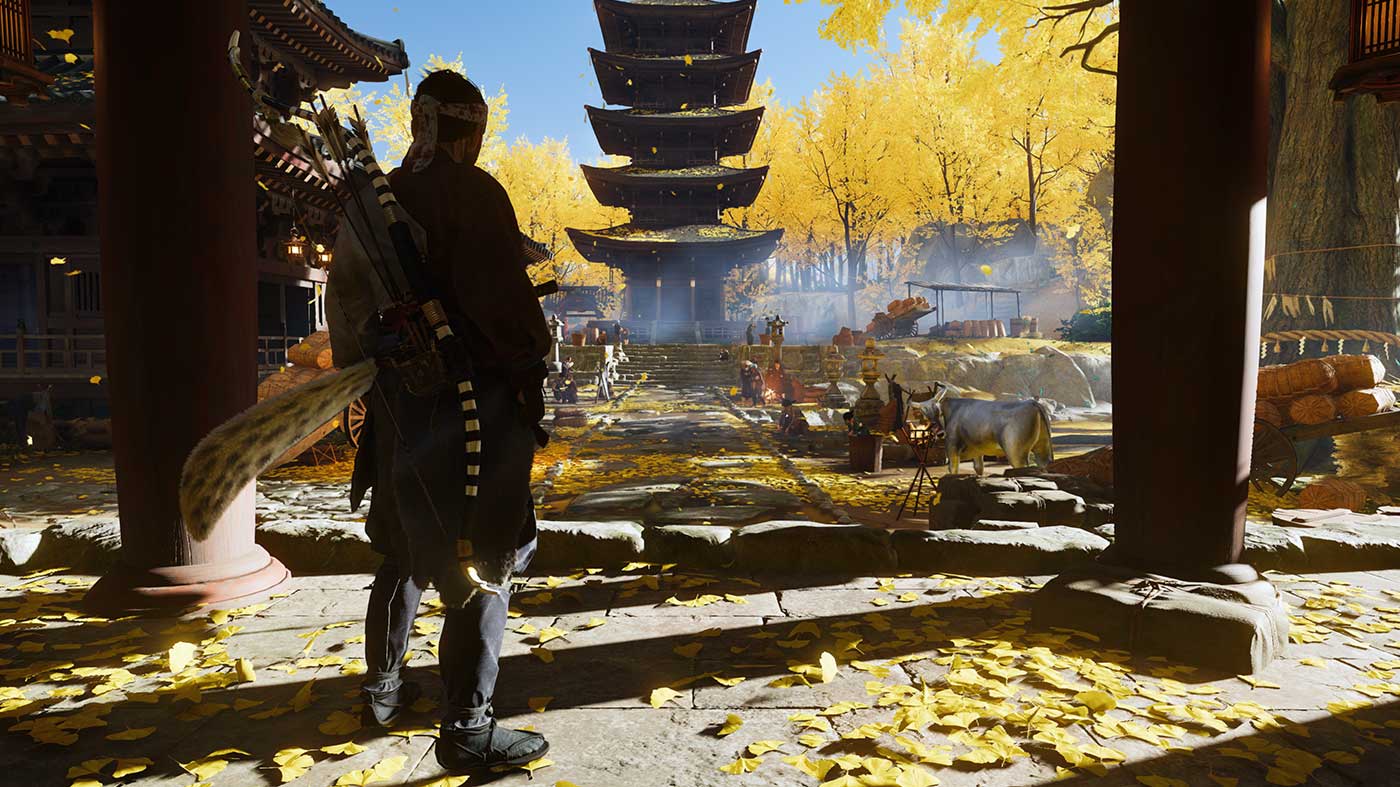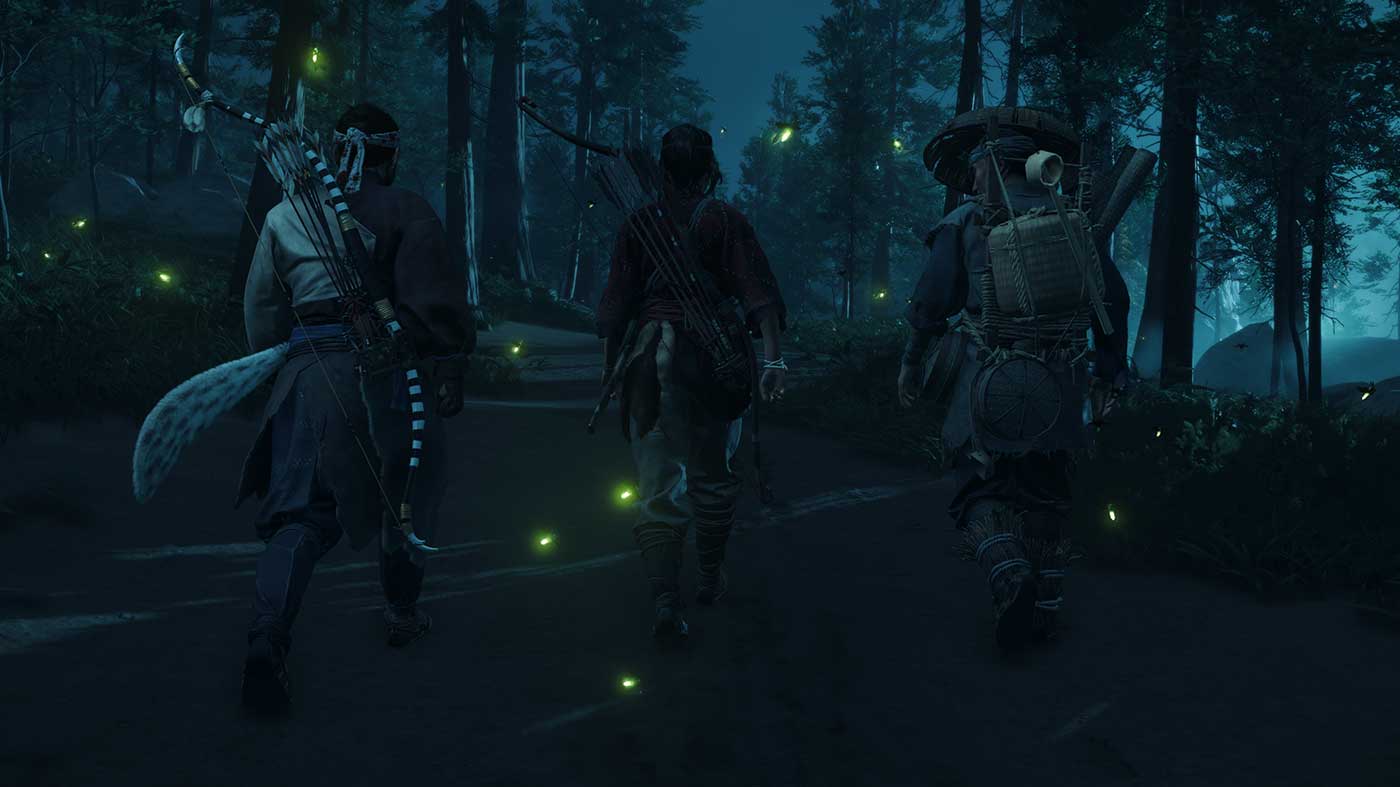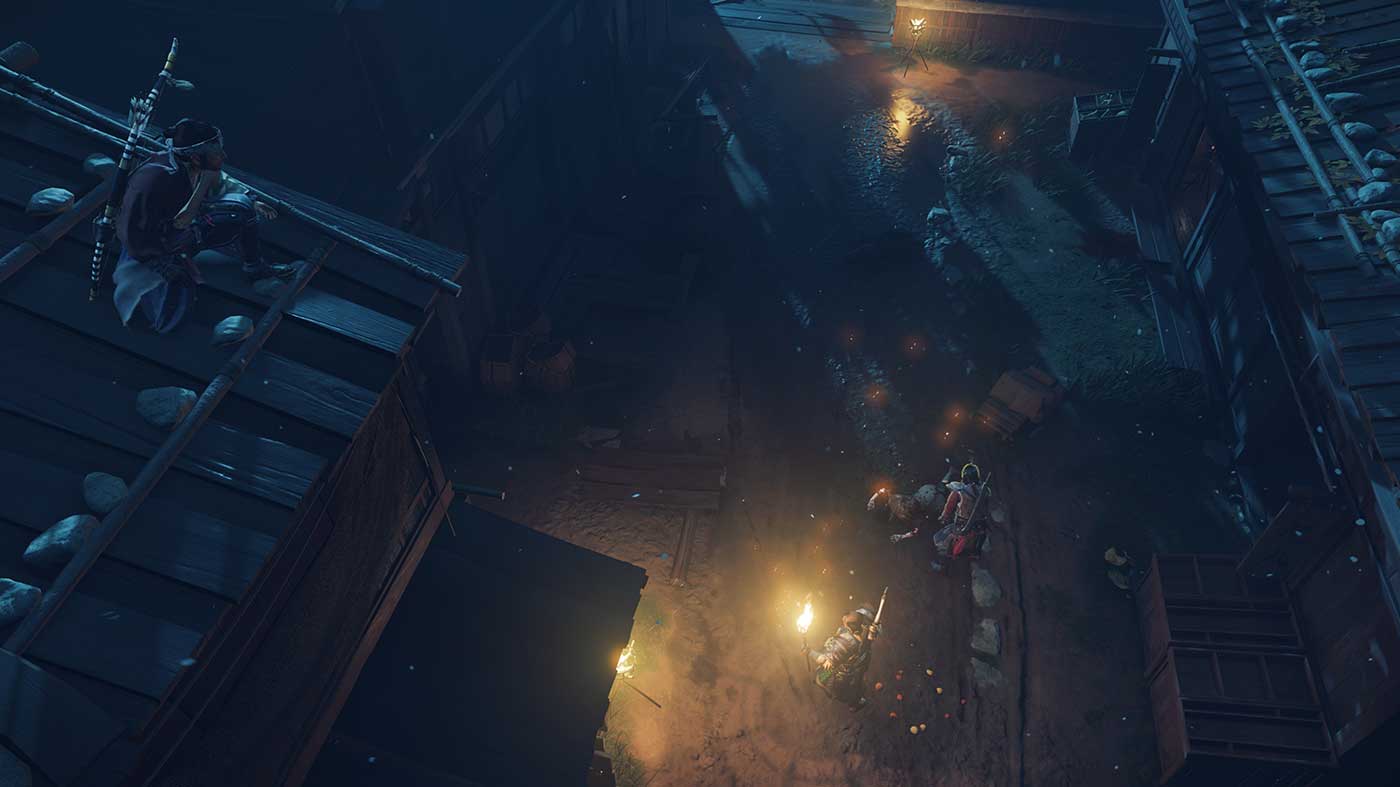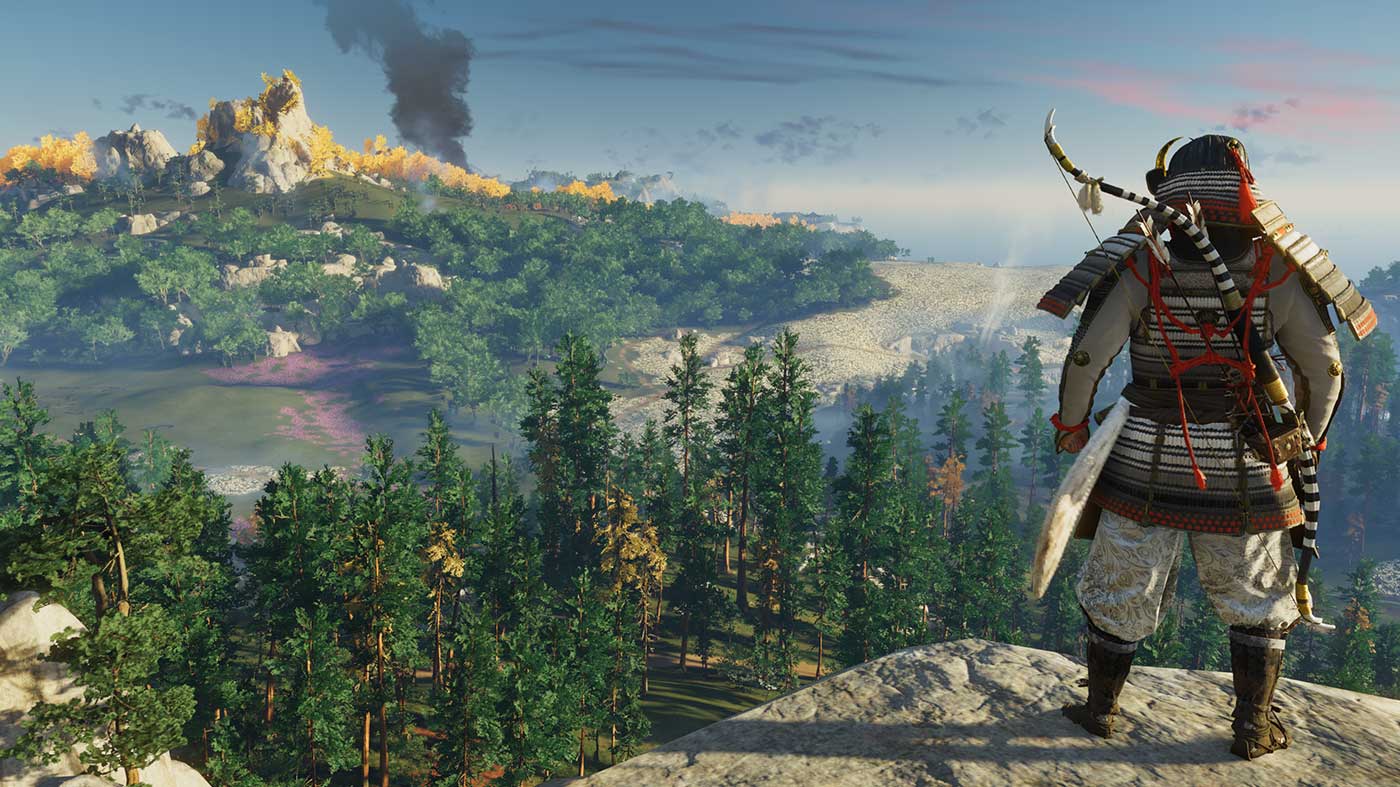When Ghost of Tsushima was first revealed at Paris Games Week in 2017, as gorgeous as the initial trailer looked, I didn’t know what to make of it. Fast forward all the way to 2020 and the final product is something starkly different to what I had been expecting. Instead of the high-concept, technical samurai simulator that I might once have anticipated based on its earliest showings, the reality is something a little more recognisable and comfortable. I didn’t think I’d be happy to find PlayStation’s last big exclusive is a fairly standard open-world action game, but I am.
Ghost of Tsushima does much of its talking in ‘Tales’. The most prominent and important of these is that of its main character, Jin Sakai. Left for dead after battling invading Mongolian forces bent on occupying the Japanese island of Tsushima, Jin is rescued and awakes to find his homeland all but overrun. Lord Shimura, his uncle and the island’s ‘jito’ is a prisoner of the Mongol leader Khotun Khan, whose army shows no signs of stopping until Tsushima’s populace surrenders or is killed. It’s a setup heavily reminiscent of classic samurai films, mostly because it’s an unabashed homage to them on the part of developer Sucker Punch (Sly Cooper, InFamous), but it builds toward something unique as Jin uncovers a world outside of his samurai heritage and calls upon the experiences of those on the fringe of ‘honourable’ society. It’s here that the true value of Ghost of Tsushima’s Tales comes to light, because more than Jin’s or even those of the faces he meets, it’s the ones that emerge from the game’s strikingly-realised world that become the most memorable.
It’s a typical scenario in Ghost of Tsushima that, with even the best intentions, going from point to point almost never occurs in a straight line. The game’s greatest asset is Tsushima itself; the island is without a doubt one of the most organically engaging spaces I’ve been thrown into in a ‘AAA open world’ game. A lot of fuss has been made in the lead up to the game’s release about its doing away with traditional way points, and though my skepticism toward features like the Guiding Wind and foxes feeling more gimmicky than game-changing was mostly well placed it’s still a refreshing change. In my time playing I rarely fell into the open world trap of trawling every inch of the game to clear icons from my map screen – almost everything I did I was compelled to do because of something that caught my eye in the world itself.
The same sentiment applies to the game’s assortment of diversions and side content. I can only discover so many hidden hot springs or spots to write haiku or cool pieces of vanity gear out in the world before the discoveries start to feel more like tasks. But even the most mundane tasks in Tsushima are still in service of building Jin’s legend and encouraging players to take in the full scope of what is a genuinely fantastic world. If you ever enjoyed any of the Assassin’s Creed games pre-Origins and wished for the franchise to go to Japan you’ll feel right at home here, even if that series already flogged ideas like fortress liberations and tailing missions to death.
If Sucker Punch is to be commended on just one aspect of Ghost of Tsushima it’s sure to be the masterfully-crafted environments and the sheer sense of place that comes from some of the most impressive use of colour and motion that I’ve ever seen in a video game. Every tree and bush, every one of the thousands of blades of pampas grass on-screen moves with and is moved by the wind – the same wind that the player can summon at will. This malleability extends to everything from the time of day to the weather to a point where a repeat visit to a familiar location almost always looks completely different thanks to shockingly photoreal colour treatments and more particle effects than I knew the PlayStation 4 could handle. One minute I’m kicking up autumn leaves under an orange sunset, the next I’m being battered by heaving rains and snow as trees whip to and fro. The technical genius that allows Sucker Punch to call these vast environmental changes on command is also handed to the player in the form of a truly special Photo Mode.
Of course for all of its sights and secrets, Tsushima is still an island in conflict, and so the bulk of Jin’s interaction with it is by the end of his blade. Weapons hit hard in Ghost of Tsushima, and combat is a ballet of considered strikes and tactful defense. It’s not quite Sekiro levels of technicality, but it’s steeped in the same reverence for traditional swordsmanship and mistakes can be just as costly. Jin’s enemies come in many forms, and it’s important to know not just when to strike, defend, parry and evade but which stance to use and how best to employ the abilities he learns throughout the game. At easier difficulties it’s possible to hack and slash your way through most situations, but playing on the Hard setting these are crucial things to consider. Fighting well feels great, but squaring off against large groups in tight spaces highlights one of the game’s most glaring issues: the lack of a lock-on and a camera that makes no effort to follow the on-screen action. Between managing your stances, equipped weapons, healing and babysitting the camera some encounters can become needlessly stressful or clumsy, but thankfully these are the exception rather than the norm.
Where the game’s combat truly comes into its own is in the smattering of one-on-one duels that crop up through the more pivotal moments in the story and in some of its more unique side quests. Making good on the promise in that debut trailer, these bouts are exactly the kind of dramatic, tense and visually stunning encounters that you’d expect from a samurai game.
While direct combat is the code by which Jin lives, extenuating circumstances necessitate the learning of new tricks and so a stealthy approach is an equally valid option. Ghost of Tsushima’s brand of stealth gameplay falls firmly on the Assassin’s Creed end of the scale, while also borrowing liberally from some stellar classics like Tenchu. Jin can creep through tall grass, distract enemies, assassinate them from behind or above and everything else you’d expect, but the game makes use of its unique setting to provide some welcome twists. Traditional Japanese architecture is the star here, with raised floors allowing Jin to crawl underneath and intricate, multi-level buildings providing plenty of unique points of entry. There’s something immensely satisfying about grappling (yes, grappling) up to the roof of a building, slipping inside through a window panel and then assassinating the poor bloke guarding the front door by stabbing him through the shoji paneling.
This is, as the game’s narrative reiterates at every opportunity, the dishonourable path and a complete violation of samurai code. It’s also the pervading theme in Jin’s story, the catalyst to his transformation into the Ghost of Tsushima and the underpinning basis of its conclusion. This might come as a shock to some, as much of the game’s marketing pre-releases has touted Jin’s ‘choice’ to follow the path of either the samurai or the Ghost, with little clarification that these choices are wholly Jin’s and not the player’s. Each player’s approach in moment-to-moment gameplay will definitely vary depending on a preference for melee combat or stealth, and Jin’s skill trees encourage putting stock in one or the other, but by the game’s finale he’ll have needed to make use of both, and most players should find themselves switching comfortably between the two. For that reason, it’s conceivable that a player going into the game with their heart set on the honourable path could find themselves disheartened when their hand is forced in gameplay purely to justify a slap on the wrist in the story, so consider this fair warning.
Though the notion of a game so prolific and inherently Japanese as this being developed by a Western developer can be a difficult one, it’s clear that this is a game less about samurai as historical figures and more about samurai as cinema heroes. Sucker Punch wears the influence of the Akira Kurosawa proudly on its sleeve, going so far as receiving the blessing of the late filmmaker’s estate and working in tandem to implement the game’s ‘Kurosawa Mode, a transformative filter that adds visual and audio treatment to emulate the black-and-white-classics (more on that here). It still stands as a unique take however, and all the richer thanks to the medium in which it’s presented. It manages a steady momentum that builds to a satisfying and cathartic conclusion too, despite betraying any expectation of narrative choice that players might have gleaned from pre-release marketing.
As something of a last hurrah for PlayStation 4 exclusives, and a fresh IP no less, Sucker Punch have confidently crafted what I’d consider their most impressive work yet. Any sense of familiarity when it comes to the gameplay format is quickly forgotten about when you get to experience what the island of Tsushima has to offer, and as a game it’s a surprisingly comfortable world for PlayStation fans to settle into after the likes of The Last of Us Part II.
THE PS4 VERSION OF THIS GAME WAS PLAYED ON A PS4 PRO FOR THE PURPOSE OF REVIEW. A DIGITAL REVIEW CODE WAS PROVIDED BY THE PUBLISHER.
